Foraging Your Own Feast
If you’re cooking a big family meal this holiday season and are a few ingredients short, the supermarket might not be your only option. In fact, the freshest, most nutritious ingredients could be right outside your door.

Many people stock their kitchens with non-native or out-of-season foods without realizing North Texas’ potential as a place to forage a rich variety of edible plants and mushrooms. By sourcing local foods from our communities, we can teach kids about sustainability, while saving money and developing healthy eating habits.
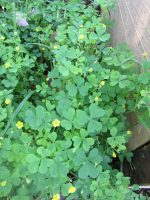
photo credit: Katelyn Reeves
Katelyn Reeves of Burleson is a community garden manager and Texas Master Naturalist. She started foraging about 10 years ago after finding a recipe for acorn molasses cookies. To learn more, she signed up for local courses and has become a knowledgeable forager, passionate about plants and preservation.
“Learning more about the prairies and the Cross Timbers region has given me an appreciation for what we have here,” said Reeves. “Especially with habitat loss and urbanization all around us.”
Reeves says that early European settlers didn’t always see value in plants that provided food and medicine for indigenous people.
“If it can’t or isn’t commodified and sold in a store, people often lose touch with it,” she said. “And then that knowledge is lost and forgotten. It’s essentially a lack of connection with the land and respect for the plants.”
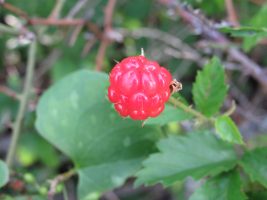
photo credit: Katelyn Reeves
According to Reeves, one of the biggest advantages to foraging is having access to fresh, nutrient-dense foods at no cost. She suggests making charcuterie boards from foraged foods to showcase local ingredients and start conversations.
“Share the food but share the experience with your friends and family about your connection to the land,” she said.
Any sensible beginning forager will have questions about where, when, and how to forage safely. Reeves points out that there are several things to consider when scouring North Texas for edibles, especially regarding contamination.
“If the area you’re trying to forage in is next to construction or a roadside, there’s going to be contaminants,” she said. “Even if you’re foraging on an old farm or ranch, it’s really good to know the history of the land.”
She recommends being cautious in oil-extraction areas as well as in flood zones where the quality of stormwater can vary. A mother herself, Reeves says foraging with children is feasible with a little knowledge under your belt.
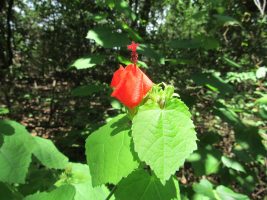
photo credit: Katelyn Reeves
“This is a kid-friendly activity if you yourself are confident in what you’re identifying and show them how to identify it,” she said. “I would never send a young child out alone to collect berries; there are a lot of berries that are poisonous. If you’re foraging dandelions or pecans in your neighborhood together, then sure.”
Sebastian Tabibi of Mansfield is the founder and president of the North Texas Mycological Association, a non-profit he started in 2021. He has been foraging for 13 years now and considers himself an expert on fungal biodiversity in the region.
Tabibi agrees that foraging can be done at a young age, under proper supervision. His organization hosts mushroom hunts specifically for children. At one of their past events, children’s author Melany Kahn was invited to present her new book, Mason Goes Mushrooming.
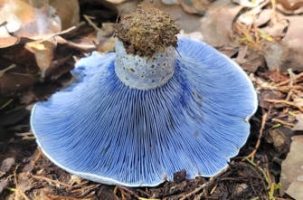
photo credit: Sebastian Tabibi
“We had about 60 people in attendance, and she took the kids one way while I took the adults without children in another direction,” he said. “Afterwards, we had a mushroom cook-off and taste testing.”
Tabibi was studying medicinal mycology at the University of Texas at Dallas when he became interested in foraging. He started uploading photos of the mushrooms he found in North Texas to different online groups, learning how to identify them along the way. Now, he is leading the North Texas Mycological Association, which is dedicated to the advancement and study of local fungi.
Members also contribute to another website called iNaturalist, where you can submit photos of foraged mushrooms and receive help identifying them. Tabibi says its main purpose is to assist in understanding the local biodiversity as well as create a database.
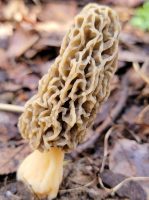
photo credit: Sebastian Tabibi
“It is the best method for beginners to start learning fungi in our area as it provides statistics on common species,” he said. “Fungi have many interesting properties, and it is only within our lifetime that we are beginning to understand them.”
For Tabibi, the benefits of foraging include learning about alternative medicines and the natural world, having the ability to live sustainably off the land, getting good exercise, and bonding with others.
Where to forage in Texas
According to Foraging Texas, public places to forage legally are limited in Texas. Foraging in state parks, national parks, city nature trails, nature preserves, state historic sites, or any other public property is often prohibited. You can, however, forage above-ground parts of plants from Texas roadsides. There are private campsites listed on the website HipCamp where foraging is allowed. Foraging on private land without permission is always illegal, and park ordinances vary so reach out to recreational supervisors to confirm local regulations. Fines for illegally foraging can range from $500 to $2100.
What to forage in North Texas
Fruits: persimmon, plums, mulberries, and wild blackberries
Greens: purslane, dandelion, lamb’s quarters, wood sorrel, and chickweed
Tubers: Jerusalem artichoke
Pods: mesquite pods
Nuts: pecans, walnuts
Mushrooms: chanterelle (summer/fall), oyster (year-round), porcini (summer/fall), morel (March/April), lion’s mane (early summer to late fall), indigo milk cap (summer/fall), chicken of the woods (summer/fall), wood blewit (summer to early winter), lobster (summer to early winter), and Caesar’s amanita (summer to late fall).
Foraging dos and don’ts:
Dos:
- Wear boots and practice safety measures regarding poison ivy, poison oak, and wildlife.
- Understand which plants are abundant and which are uncommon.
- Be aware of poisonous or toxic lookalikes.
- Understand identification points of plants including the leaves, berries, stems, flowers, etc.
- Use your best judgment when gathering fruits and nuts off the ground.
- Wash whatever you forage, especially if you suspect it has been sprayed with chemicals.
- Try a tiny bit of a foraged mushroom to see if you have an adverse reaction before consuming a large amount.
- Make sure you can retrace your steps.
Don’ts:
- Don’t take more than your share.
- Never forage rare plants or plants in at-risk ecosystems.
- Never touch fuzzy caterpillars. Beware of bee and wasp nests as you forage, as well.
- Never rely solely on an app that uses artificial intelligence to identify a plant. They are often wrong and can lead to inadvertent poisoning. Always verify a plant with multiple reputable sources.
- Don’t forage younger mushrooms that haven’t reached their sporulation stage if they are not in abundance.
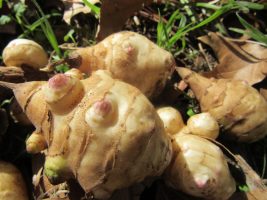
photo credit: Katelyn Reeves
Roasted Jerusalem Artichokes
Also known as sunroot, sunchoke, wild sunflower, or earth apple, these starchy crops cook much like potatoes. They can be used in soups and salads, but a favorite way to eat them is roasted.
Roughly chop Jerusalem artichokes into chunks.
Toss with olive oil, garlic, salt, and pepper.
Add herbs like fresh rosemary or basil.
Roast in a baking dish at 400° for 20 to 30 minutes, or until they’re caramelized and fork tender.
Please note: in the issue of Madeworthy in which this article first appeared, the author’s name was misspelled. We apologize to Mollie Jo Jamison and are so grateful she has agreed to keep writing for us. She’s good!


 Sign in
Sign in

